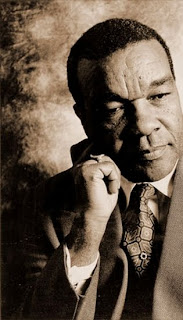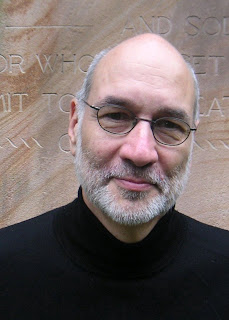COLLEGE PARK, MD. – The David C. Driskell Center for the Study of the Visual Arts and Culture of African Americans and the African Diaspora was recently awarded a $149,719 grant from the Institute of Museum and Library Services [IMLS]. The two-year grant will provide support for documenting and presenting the Professor David C. Driskell Archive of African American Art, a task central to the Center’s mission to expand and replenish the field of African American art. The grant is awarded as part of the Museum Grants for African American History and Culture to organizations committed to preserving and sharing the history of African American life from the period of slavery through present day.
The IMLS grant will provide support for documenting Professor Driskell’s one-of-a-kind archive, assembled over more than six decades and consisting of an estimated 50,000 objects. IMLS funds will be used to hire an archivist and two graduate student interns, as well as a consulting archivist, to guide the process. The archivist will develop procedures for inventorying and accessing the collection, supervise students in data entry, and write a manual of procedures to be used by the Center’s future students, archivists, and staff. Accessibility to the archives will be enhanced through an online presence, thus increasing outreach and exchange of ideas with the surrounding community as well as with researchers and art professionals both nationally and internationally.
Among the unique objects in the Driskell Archive are exhibition catalogues; lectures; students’ dissertations; slides; art projects; children’s art kits about African American life and culture; magazines; and, most importantly, correspondences with such nationally known artists as Romare Bearden, Elizabeth Catlett, Aaron Douglas, Jacob Lawrence, Georgia O’Keefe, and James Porter. Most of the material included in the archive has yet to be explored; however, the contribution of Prof. Driskell to the field of African American art is unquestionable. Using the words of Professor Keith Morison, retired Dean of the Tyler School of Art at Temple University, PA, and a Driskell Center Advisory Board Member, “The Framework of African American art and its relationship to people of African descent was set forth by three people: Alain L. Locke, James A. Porter, and David C. Driskell…he established African American art as a legitimate and distinct field of study.” (David C. Driskell: Artist and Scholar. Julie L. McGee. Pomegranate Communication Inc., Petaluma, CA. p. 9-10. 2006).
Dr. Robert E. Steele, who serves as the Executive Director of the David C. Driskell Center since 2004, says: “It has been my contention that one of the hidden treasures of the David C. Driskell Center is the invaluable archive of Prof. Driskell’s personal papers. This archive demonstrates the rich history and development of the field of African American art within the canon of American art history. I am pleased that IMLS provided this award in recognition of this treasure.”
The Institute of Museum and Library Services is the primary source of federal support for the Nation’s 123,000 libraries and 17,500 museums. The Institute's mission is to create strong libraries and museums that connect people to information and ideas. The Institute works at the national level and in coordination with state and local organizations to sustain heritage, culture, and knowledge; enhance learning and innovation; and support professional development. To learn more about the Institute, please visit www.imls.gov.
The David C. Driskell Center celebrates the legacy of David C. Driskel—Distinguished University Professor Emeritus of Art, Artist, Art Historian, Collector and Curator—by preserving the rich heritage of African American visual art and culture. The Driskell Center is committed to preserving, documenting and presenting African American art, as well as replenishing and expanding the field of African American art. The Center exhibition program is supported, in part, by a special fund from the Office of the President at the University of Maryland, and a grant from the Maryland State Arts Council.
The Driskell Center Exhibition Program is supported by a grant from the Maryland State Arts Council. All programs at the David C. Driskell Center are free and open to the public. The facility is wheelchair accessible. The Driskell Center Gallery hours are Monday through Friday from 11AM to 4:00PM with extended hours on Wednesday until 6PM. For further information regarding exhibitions and activities at the Driskell Center, please call 301.314.2615 or visit www.driskellcenter.umd.edu ###
FOR IMMEDIATE RELEASE NEWS RELEASE Contact: Ms. Dorit Yaron Title: Deputy Director Phone: 301.405.6835 Email: dyaron@umd.edu
IMLS Contact: Ms. Jeannine Mjoseth Phone: 202-653-4632 Email: jmjoseth@imls.gov


































